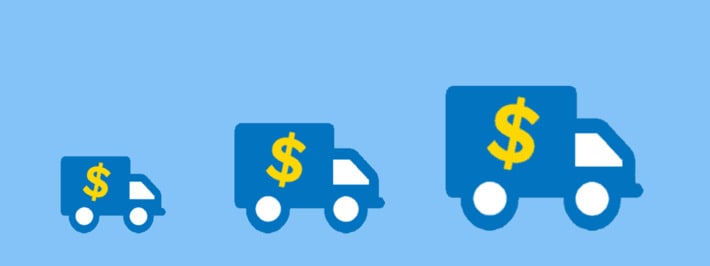
Optimizing Shipping Cost in E-Commerce
Price sensitivity is one of the key factors that affect the buying decision of the clients. Buying goods on the Internet, customers do not face many other factors which are minor but in the circumstances of offline purchase may affect the final decision, like the behavior of salespeople, design, and decoration of the store. E-commerce can offer many advantages for their clients, like 24/7 reachability, easiness of purchase, time efficiency. But in reality, the only data we analyze while buying things online are the following: appearance and specifications of the product, price, and terms of shipping. So, as you can see, delivery, in general, plays a significant role in customer relations, and its quality may seriously affect the whole opinion about the seller. That’s why it’s been a real challenge for e-commerce companies: what to do to cut the shipping cost and make the process easy and quick.
The main question every online entrepreneur needs to analyze while calculating and optimizing the shipping costs are:
1. Shipping costs may vary
Every company that plans to set a sale for Black Friday wants to make their prices very attractive, as it’s time when all their competitors are going to do the same. E-commerce companies should pay attention to the fact that in high season the demand for shipping services rises, but the capacities of the shipping companies nearly remain the same. That’s why they provide extra fees or can’t keep the terms of delivery stable in the means of time. To minimize the risks, online shops may divide the price into two parts: the price of the product itself and the one of delivery.

So here, in this situation, the terms of shipping go as additional service, and the client can easily make a buying decision on the base of the price you offer, and possible extra fees for shipping that might occur during the holiday time won’t affect the opportunities of the seller.
2. The type and size of the shipping company matters
Many entrepreneurs think that the bigger the shipping company is, the more comfortable it is to cooperate with them. They may be right, but only partially. Big shipping companies have developed well-organized mechanisms of delivery, have more representative offices, vehicles, and employees, that can, certainly, guarantee that the goods will arrive on time. Global carriers also have user-friendly systems for shipment tracking. On the other hand, global players are more interested in cooperation with bigger senders. That’s why if your company is small and the orders you make are not that heavy, you won’t be able to have cost advantages within this cooperation. On the contrary, smaller local shipping firms might not help much if you plan to send your products worldwide, but they are quite advantageous for local sending, as they can fulfill their tasks within a short period of time. Besides, small companies are more convenient to negotiate with. They appreciate and value their clients and are more flexible in the means of costs. Having smaller staff, they have more opportunities to cut expenses without losses.
3. Use digital solutions for cost calculation
Nowadays, there have been developed a great number of shipping solutions for e-commerce. With the help of professional software, it’s quite easy to compare the costs of famous shipping companies. For those e-commerce companies who just start their way, it’s a good solution to get the general idea of how much everything costs to offer the relevant prices for their products. Depending on the e-commerce platform you use (Woo, Magento, etc.), you can choose the most suitable software solutions for shipping cost calculations, as most of them easily integrate with the mentioned platforms. They are very useful if you want to compare the prices of different carriers and make the right decision on whom to choose. Many e-commerce companies still don’t realize that the shipping cost calculated in a proper manner can be sales-stimulating, as your clients see the variety of options and accurate numbers. The step-by-step calculation, when you gradually enter the data, makes the calculation process accurate and transparent. You can also specify the calculation process, entering your location, choosing the type of the product, and the desired time limits.

And, of course, providing more delivery variations to your clients will demonstrate that you care about their comfort in this way.
4. Optimize the insurance fees
Shipment insurance is very important, especially for goods at a high price. On the other hand, you can always offer insurance as an option for your clients. Of course, you need to have a good contact base with the main insurance companies and be aware of their prices. But it’s a good idea to share the responsibility with your client, providing the insurance cost as a separate item of expenditure. In this way, the total cost of the product may be presented within a formula with three components: product price, shipping cost, and the cost of insurance (you may provide a price list of different insurance companies). Your client will have an opportunity to choose whether to add an insurance fee to the offer and choose the company which will provide this kind of service. This strategy has shown a very positive impact on the development of trustful relations between customers and sellers.
5. Monitor the market of shipping services
Like any other market, the market for shipping services has its rise and falls. That’s why one of the R&D tasks for your e-commerce company should be monitoring of the shipping services companies. If a new player comes to the market, don’t hesitate to initiate negotiations with them. In the first stages of their development, shipping companies are very careful about the quality of the services they provide and are also ready to offer attractive prices to gain as many clients as possible. So, you can always try some new shipping provider, and if the quality of their services is high enough for you, you can cut down the shipping costs with the help of changing the shipping agent.

Article by:
Guest Blogging Team
Published on:
July 31, 2020
Last updated on:
December 24, 2020


